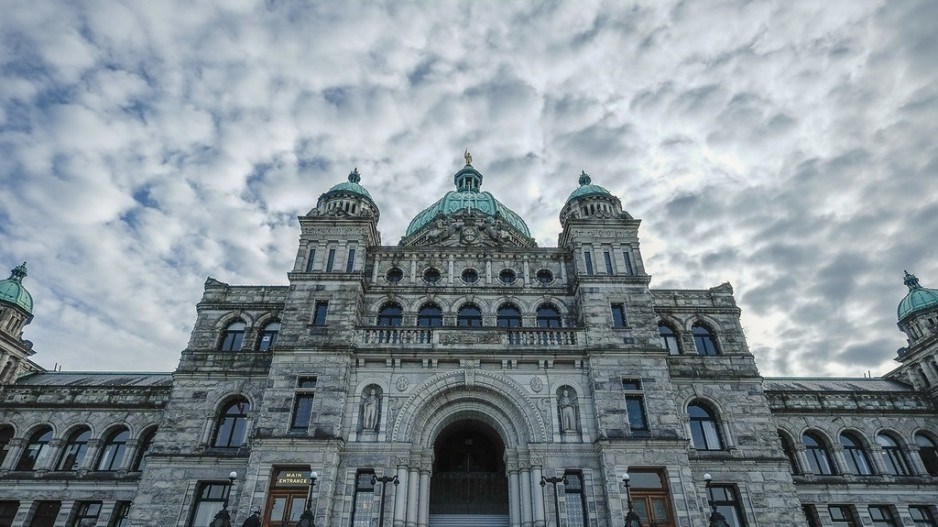Government deficits are back. According to the latest fiscal and economic update from the Ministry of Finance, B.C. is on course to post a whopping $6.7 billion operating deficit this year – a striking $1.2 billion bigger than the shortfall recorded the year the economy was closed during the worst of the COVID pandemic.
The ballooning deficit is being driven by escalating program spending, a $1 billion bill for wildfire fighting and softening revenues linked to a weakening economy and lower natural gas prices. The news release accompanying the update says that “B.C. puts people first,” but these same people – the residents of British Columbia – will be on the hook for the outsized deficit and fast-rising provincial debt being planned by Premier David Eby and his cabinet.
Apart from the gusher of red ink, a few items in the fiscal and economic update caught our attention.
One of the most notable is the dismal growth outlook. While the Ministry of Finance touts a “resilient” economy, the true picture is considerably less reassuring: Measured on a per-person basis, GDP (or income per capita) is projected to decline by at least four per cent over 2023-24. The only thing standing in the way of the traditional definition of a recession (a decline in total real GDP) being met is B.C.’s surging population. Newcomers immediately become consumers of goods, services and housing and many also join the workforce. All of this adds to economic activity. In this way, an expanding population lifts economy-wide spending and the aggregate level of income – but not necessarily income per person. The economic forecast in the Q1 update points to real per capita income – overall prosperity – visibly retreating in British Columbia in 2023-24, with 2025 looking close to call at this point.
A second “highlight” is a head-spinning run-up in government debt. Most of B.C.’s debt is from borrowing to fund the construction of infrastructure. A small portion reflects the annual shortfalls in operating spending minus revenues. If we ignore the balance sheets of theoretically “self-supporting” provincial entities like BC Hydro and BC Lottery Corp., the province’s total net debt is now just shy of $71 billion, up from $41.5 billion in 2016-17 – a 71-per-cent jump.
The debt continues to soar under the government’s revised fiscal plan, hitting almost $100 billion by 2026. As a share of GDP, the net debt is on track to reach 22.6 per cent in 2026. Two years before the COVID pandemic disrupted things, it stood at 14.4 per cent of GDP. Skyrocketing public sector debt is putting B.C.’s hard-won reputation for solid fiscal management at risk.
The government’s refreshed economic forecast contains some other interesting data points. Despite the political priority attached to housing, the number of housing starts is poised to drop significantly in 2024 and remain near 40,000 per year until 2027. In 2021, by comparison, B.C. recorded 47,600 housing starts. Building fewer new homes won’t do much to bolster housing supply or improve affordability. Inadequate housing supply takes on added importance in light of the ministry’s expectation that B.C.’s population will continue to grow briskly over the next several years, albeit not matching this year’s blowout 3.2-per-cent increase. One wonders where the 500,000 new residents likely to arrive by 2027 will live.
Turning to the labour market, employment growth will slow over the next two years against the backdrop of an essentially stalled economy. Talk of labour shortages will soon give way to worries about job losses. The update is largely silent on the most striking feature of the B.C. labour market in the last year: The steady expansion of public sector employment, while the number of employees on private sector payrolls has fallen. This is not a formula for fiscal sustainability nor for a vibrant economy.
Finally, the government’s economic update has little to say about trends in business investment. The Ministry of Finance is surely aware that non-residential construction investment is set to fall steeply as a handful of multibillion-dollar projects are completed. This category of investment has made an outsized contribution to economic growth in B.C. in the last half decade. As these large projects wrap up, the decline in investment and the related winding-down of construction activity will slow economic growth and create a less favourable environment for growing government revenues and righting the province’s fiscal framework.
Jock Finlayson is chief economist of the Independent Contractors and Businesses Association. Ken Peacock is the Business Council of British Columbia’s senior vice-president and chief economist.




